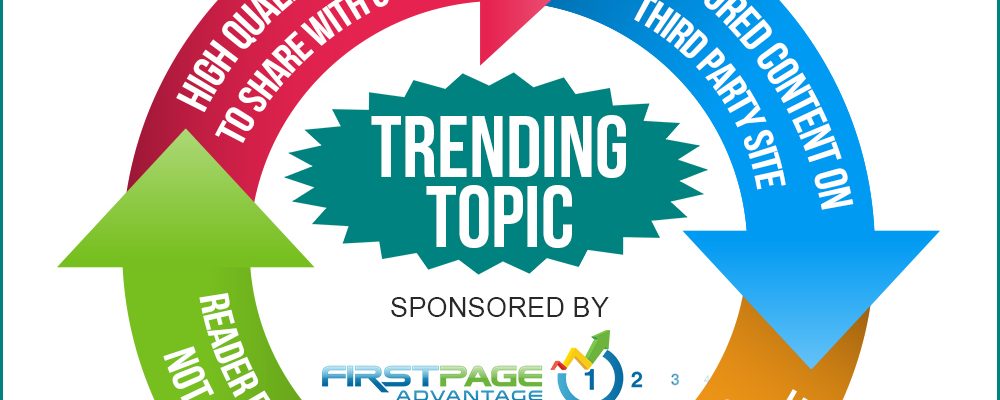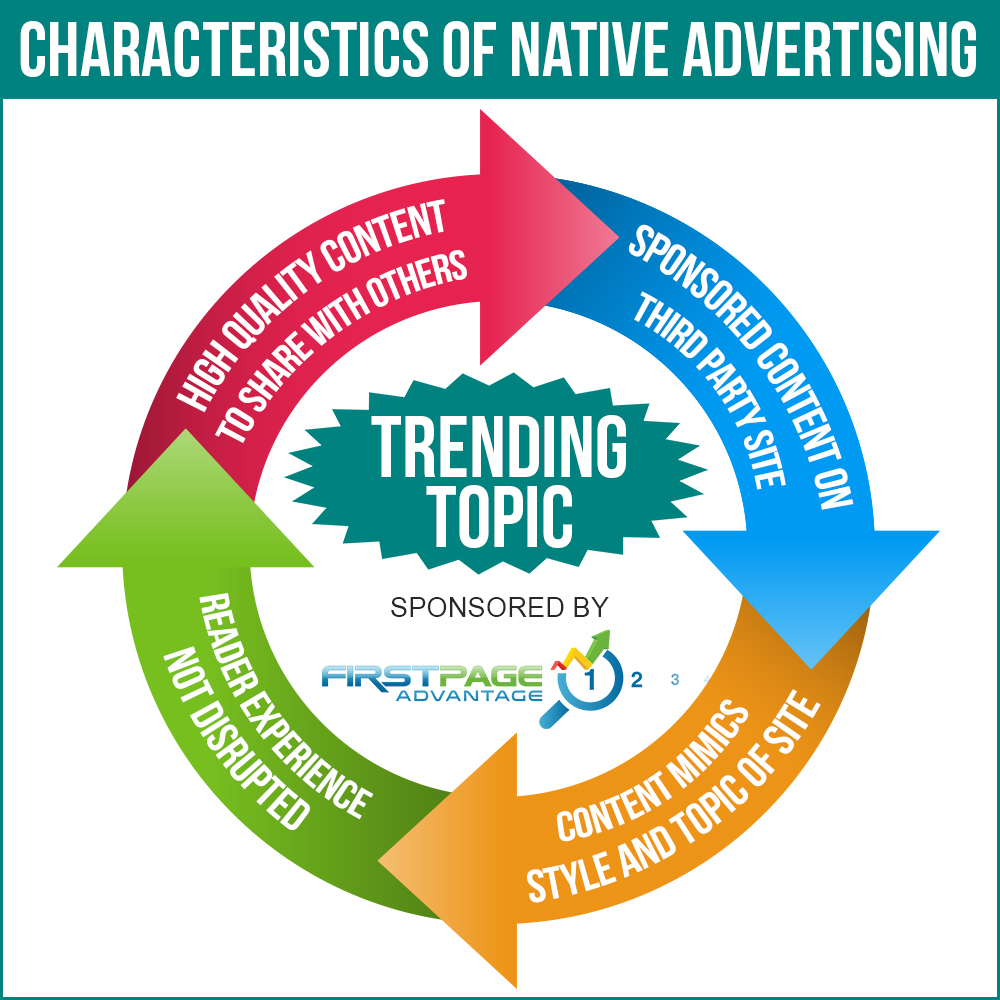What is Sponsored Content and Native Advertising?
Have you ever clicked on a banner ad? If the answer is a resounding no, you are in good company. The average click through rate for display ads is only 0.06% and ad blocking is growing at an alarming pace. This is why more and more companies are turning to subtler native advertising to promote their products, with brands expected to spend $4.57 billion on social native ads by 2017.
Definition of Native Advertising
So what are native ads? Native advertisements are a type of disguised content that can appear in many forms. One of the most common examples, which has been around for decades, is product placement. There are a lot of complicated explanations out there, as well as lists of conditions for native advertising content, but there are actually three basic requirements that must be met:
Pay to play
Native advertising is just that: advertising. A company has bought space on a third-party platform to advertise its content.
Content-based
It is usually not in the form of blatant advertising that promotes a product, but rather appears as interesting content that offers useful or entertaining information to the users of that platform.
In-stream material
The content must appear in the same style and form as other items on the page, without interrupting the user experience or changing the flow of information.
Guidelines for sponsored content
Many news sites, social media platforms and native advertising companies have created their own policies to label branded content so that the consumer will be able to recognize commercial material. To protect internet users and ensure the line between editorial and commercial was not further blurred, last year the Federal Trade Commission released an enforcement statement and guidelines for explicitly labeling sponsored material. In response, the Interactive Advertising Bureau (IAB) released a Native Advertising Playbook identifying six formats currently being used on the sponsored content landscape, as well as its own guidelines for disclosure and transparency for native content.
Examples of Native Advertising
Even if you’re not aware of it, you encounter native advertising regularly almost every time you use the internet: on social media, search engines, and even trusted news websites. Until recently, the content has been limited to text, images and GIFs, but as reported by marketing and media news website Advertising Age, photo-sharing platform Imgur has recently allowed marketers to embed videos in their promoted content. So what form does native advertising take on various platforms?
On social media
In April of this year, Facebook announced that it would allow branded content directly on publishers’ pages, as long as the content is marked with a special tag and all partners are disclosed as coauthors at the bottom of the post. If you look closely you will also notice sponsored posts on other social media channels such as Twitter and LinkedIn. These posts look like regular content in your feed but are marked “sponsored.”
In search engines
The first results in search engines such as Google or Bing are often labeled “ad.” They are in the same format as other results, though the space has been paid for by companies to ensure optimal placement for their products.
On websites
Take a look at local business to business event sponsorship. Internet marketers at First Page Advantage say that “the annual executive golf tournament, or other community fundraiser, is a great way for a business to gain exposure.” The event page usually lists levels of donors and sponsors, which is an effective native advertising method.
The New York Times (and other news websites)
What, a prestigious, trusted news outlet such as The New York Times devotes space to paid content among its editorial articles? Yes, in partnership with Dell, the Times website debuted native ads with its redesign in January 2014, and it has never looked back. The news site is extra careful about labeling its content, with the paid articles opening in a new browser window with the URL paidpost.nytimes.com rather than nytimes.com, The promotional content is labeled “Paid For and Posted By” the partner with an additional disclaimer at the bottom of the page.
A major source of revenue, native ads are an integral part of the content offered by many news websites. These sponsored articles mimic the other content on the site and are displayed in the same way. They are often labeled “Sponsored post,” “Promotional content,” or simply “Advertising” and sometimes appear in a group of articles under the headings “Recommended for you” or “You might also like.”
Native Advertising Vs. Content Marketing
Native advertising is often confused with content marketing. Native advertising is always sponsored content that appears on a third-party platform in the same form as the platform’s editorial content, whereas content marketing material is tailored to deliver a specific message to a tailored audience and is published via the brand’s own channels, such as its email newsletter, social media account, or website.
The Best Native Advertising Content
We know that big bucks are being spent on native ads, but do people really read and share content they know is sponsored? The statistics indicate that they do. According to the team at online ad network Dedicated Media, native ads generate an 82% brand lift and 32% of those polled said they would share native advertising content with friends or family. And the folks at Search Engine Watch – while sharing that they aren’t the biggest fans of native advertising – reveal that a sponsored post published earlier this year fared only slightly less well than their top-performing post the same week.
But what are the hallmarks of effective native ads?
- They are delivered in-stream, and do not disrupt the user experience. Readers should not have to change their normal behavior to access the content.
- The content mimics other content found on the site, not only in form and style, but in terms of content as well. If a page is dedicated to articles about healthy baking, for example, the sponsored content should be related.
- The posts must be interesting and high quality. Just as users won’t read until the end, or share editorial articles with their friends and family unless they are well written and tailored to the audience, they won’t interact with promoted posts unless the content offers something of value.
- Subtlety is key. The article or post should engage the audience and call attention to the brand without appearing to promote or sell a product or service. One outlet that is viewed as a pioneer in integrating sponsored material without detracting from its content’s entertainment value is Buzzfeed. The trademark features are clearly labeled with the sponsors’ names, while at the same time creating compelling content and reminding readers of the brand’s product using products placement or other means.
What Does the Future Hold?
Native advertising is not without its critics, especially among old-school journalists who frown on the blurring of the lines between promotional and editorial. But for now, at least, with the commercial success of outlets such as Buzzfeed, native advertising is here to stay.


